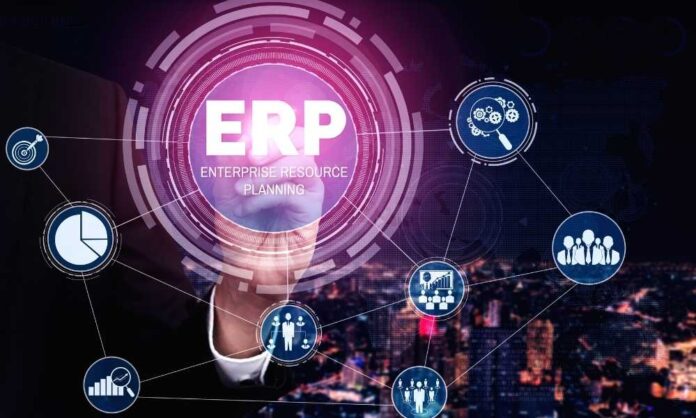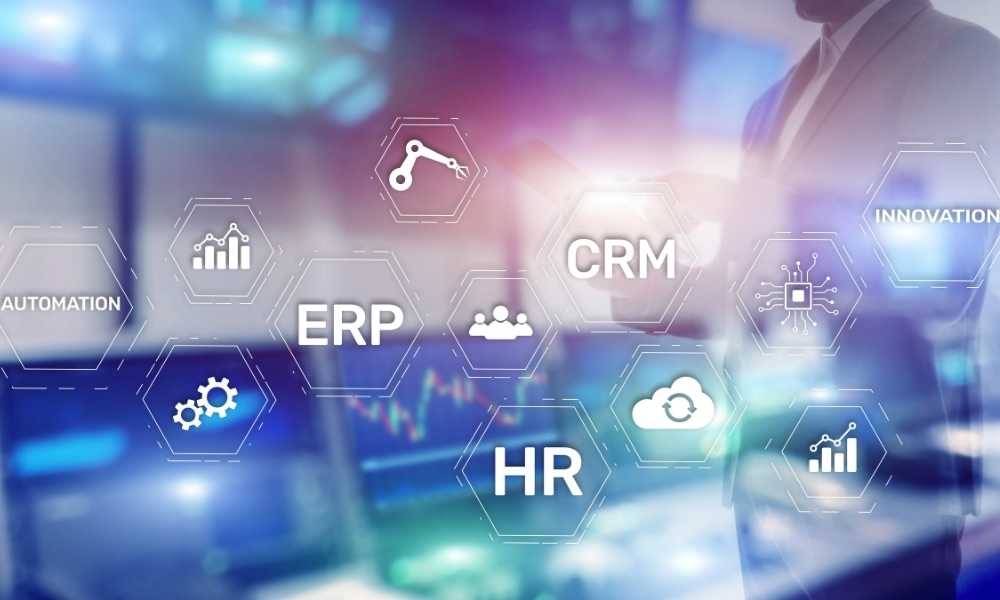Before the advent of cloud computing, on-premises ERP deployment was the only option for businesses that wanted to implement ERP systems. In today’s world of ERP software, however, nearly every ERP provider offers cloud based enterprise software options! Some offer them exclusively.
Choosing cloud-based Enterprise Resource Planning and on-premises ERP can be challenging for a business considering an ERP software purchase. That’s why it’s so important to weigh the pros and cons of each option and choose the one that fits your business best. Below, we’ll discuss the basic differences between cloud and on-premises ERP software, including some of the most important factors that can help you make the right choice for your business.
Cloud Based ERP: Pros and Cons
Cloud ERP is the most popular Enterprise Resource Planning software on the market today. These software suites are primarily web-based and use the ERP vendor’s servers rather than an in-house server. Generally speaking, cloud ERP software products are offered on a software-as-a-service (SaaS) model, in which the client company pays a monthly fee for a license to use the software.
Pros
1. Easier Implementation
Generally speaking, cloud-based Enterprise Resource Planning systems are relatively fast and easy to implement. Many can be rolled out in a few weeks or months, which is a substantial improvement over older on-premises systems that could take as long as a year to implement fully.
2. Wider Selection
The cloud ERP market offers a wider variety of options than ever, and the number of choices has increased! As more ERP vendors roll out their cloud offerings, any business searching for a cloud ERP system will have a bevy of great options, often including industry-specific Enterprise Resource Planning systems designed for the specific needs of their vertical.
3. Lower Upfront Costs
Cloud-based ERP systems will almost always have lower upfront costs than on-premises systems. A small or medium business will often find the low upfront cost of a cloud ERP system a key factor in deciding since it allows them to get up and running without making a large investment in server equipment.
4. Mobile Friendly
Most cloud ERP systems use a centralized source of data that syncs in real-time across all platforms, including mobile devices. Moreover, mobile apps are a key component of many cloud ERP solutions. These solutions offer out-of-the-box mobile apps that can perform important business functions anywhere and from almost any device, including phones and tablets.
5. Automatic Updates
Because the vendors remotely manage cloud-based Enterprise Resource Planning platforms, the software receives automatic updates and security patches. This helps ensure that your system is always up to date without reminding employees to check for and install updates.
Cons:
1. Fewer Customization Options
The first big downside of cloud based ERP solutions is that they often aren’t as customizable as on-premises software. While SaaS ERP platforms are becoming more flexible, they still don’t feature the same level of ground-up customization found in on-premises options.
2. Potentially Higher Ongoing Costs
Choosing a cloud-based ERP system requires a business to commit to paying an ongoing SaaS subscription fee. Eventually, a cloud ERP system may have a higher total cost of ownership than an on-premises system.
3. Less Control Over Data
A cloud-based ERP system requires a business to trust the cloud provider to safeguard its most important data. Careful legal scrutiny is also necessary to ensure that a business has total ownership over its data, even when stored on third-party servers.
Check out: What Is Cloud-Based Analytics And Does It Works?
On-Premises ERP: Pros and Cons
On-premises ERP software uses in-house server equipment to perform its functions and store data. Before cloud computing, all ERP was on-premises, and it still offers certain advantages for the right business. Many businesses still use on-premises ERP software because they’re not quite ready to upgrade yet, and some ERP vendors also now offer hybrid solutions that combine the best of both worlds of cloud and on-premises ERP.
Pros:
1. System Ownership
With almost all cloud ERP systems, you’ll have access to the system only if you continue to pay the subscription fee. In contrast, an on-premises ERP solution usually comes with a perpetual software license that allows a business to continue to use it forever.
2. Extensive Customization Choices
Customization is another of the biggest strong points of the on-premises route. A business can extensively customize an on-premises system so that it can’t work with a cloud system. Although the process can be long, the result will be a truly custom system, which can be important in highly specialized industries.
3. More Control Over Data
A business using on-premises ERP has full control over where its data is stored, its use, and who can access it. Of course, that also implies taking responsibility for implementing data security measures because the alternative is a potentially catastrophic data breach.
Cons:
1. Maintenance and IT
On-premises ERP systems will require in-house IT resources to maintain the server equipment and software. Whether securing the network or troubleshooting employees’ technical difficulties, budgeting time and resources for these tasks is an indispensable part of using an on-premises system.
2. More Complex Deployment
An on-premises ERP system can take substantially longer to deploy than a cloud solution, especially if the business chooses to customize many features. Even in a well-managed rollout, on-premises ERP implementation projects can tie up in-house IT resources for months — to say nothing of the chaos that a poorly-managed rollout can cause.
3. Fewer Mobile Options
On-premises solutions are less likely to include native mobile apps. While some businesses solve this by building their custom apps for remote access to on-premises systems, it’s certainly not as easy as the options that a cloud ERP solution provides.
Final Thoughts
Some types of businesses may gravitate to either on-premises or cloud solutions. Many small businesses, for example, choose cloud solutions for their simplicity and low upfront cost, while larger enterprises may be more willing to take on the risk and reward of a highly customized on-premises system.
Ultimately, however, the needs of each business must be paramount in making the decision. That means taking the necessary time to weigh every factor and determine how it affects your business. ERP comparison sites can offer additional resources for research, and it’s a great idea to try out the free demos that most ERP vendors offer for a hands-on evaluation.
Check out: 10 Steps to Create and Implement a Strong ERP Strategy


